Mad Hedge Technology Letter
December 28, 2022
Fiat Lux
Featured Trade:
(STICHED UP BY ITS OWN POOR DECISIONS)
(SFIX), (AMZN)

Mad Hedge Technology Letter
December 28, 2022
Fiat Lux
Featured Trade:
(STICHED UP BY ITS OWN POOR DECISIONS)
(SFIX), (AMZN)

I don’t get Stich Fix (SFIX).
It’s not that they shouldn’t be a company - I’ve seen worse ideas cut up on the drawing board - but I don’t see how they will ever become successful.
They probably should have invested in Bitcoin before it blew up to $65,000 because that was the last savior before tech companies realized they couldn’t just roll over debt anymore.
SFX’s lack of competitive advantage is worrisome, and they haven’t done enough to differentiate themselves amongst competition.
For a company fighting for relevancy, they have made some boneheaded mistakes.
They recent hired a new CEO Elizabeth Spaulding with no apparel experience - she was only a consultant with Bain and has never run a company in her life.
For one, customers don’t receive a great sales price on the clothes. Unless keeping the entire box (5 items), they won't get a discount. They also won't find any coupons online for Stitch Fix.
For many tech companies that preach the freemium model, Stich Fix is asking customers to pay a premium for clothing upfront without proof of a brand premium, and I believe that is turning off a lot of potential customers.
A tech company with decelerating revenue for 6 straight quarters is a red flag.
If you are a bargain bin fanatic, the sight of SFIX’s service will turn you off.
Stitch Fix claims the average price of items is around $70, but that the items can cost anywhere between $20 and $400.
You can set price ranges for each category, but that doesn't mean your stylist will always follow those instructions.
Pigeonholing oneself as a luxury service but hoping to scale broadly and fast like a tech company is counterproductive.
Many Americans simply won’t pay up to $500 for a 5-piece set of clothing no matter who is styling it.
This sounds like a service for a computer programmer in San Francisco with a $200,000 annual salary--which isn’t a bad thing, but it will fail to scale.
Just as important, there is quite robust competition that undercuts SFIX such as Amazon (AMZN) Prime Wardrobe.
Amazon Prime Wardrobe is an exclusive program just for Prime members. This service gives users the chance to have chosen clothing items shipped to their home for them to try on before buying. The difference here is that the user selects the item which, for me at least, makes sense instead of SFIX blindly shipping clothes that aren’t ok’d. I just don’t think a “stylist” can get it right more than half the time. You only pay for what you keep and you have 7 days to make up your mind.
The biggest head scratcher is the $20 SFIX styling fee if you don't keep anything.
Seriously, what is that about?
If you hate their expert stylish decisions, you get blamed for it and pay $20 for nothing! Shouldn’t it be SFIX paying the user $20 for failed style sense?
And this is without even mentioning the pain of resending the clothes!
The inferior business model explains why the stock has gone from $120 fifteen months ago to under $3 per share today.
Don’t bet on a reversion to the mean trade as well, there are so many better stocks out there.

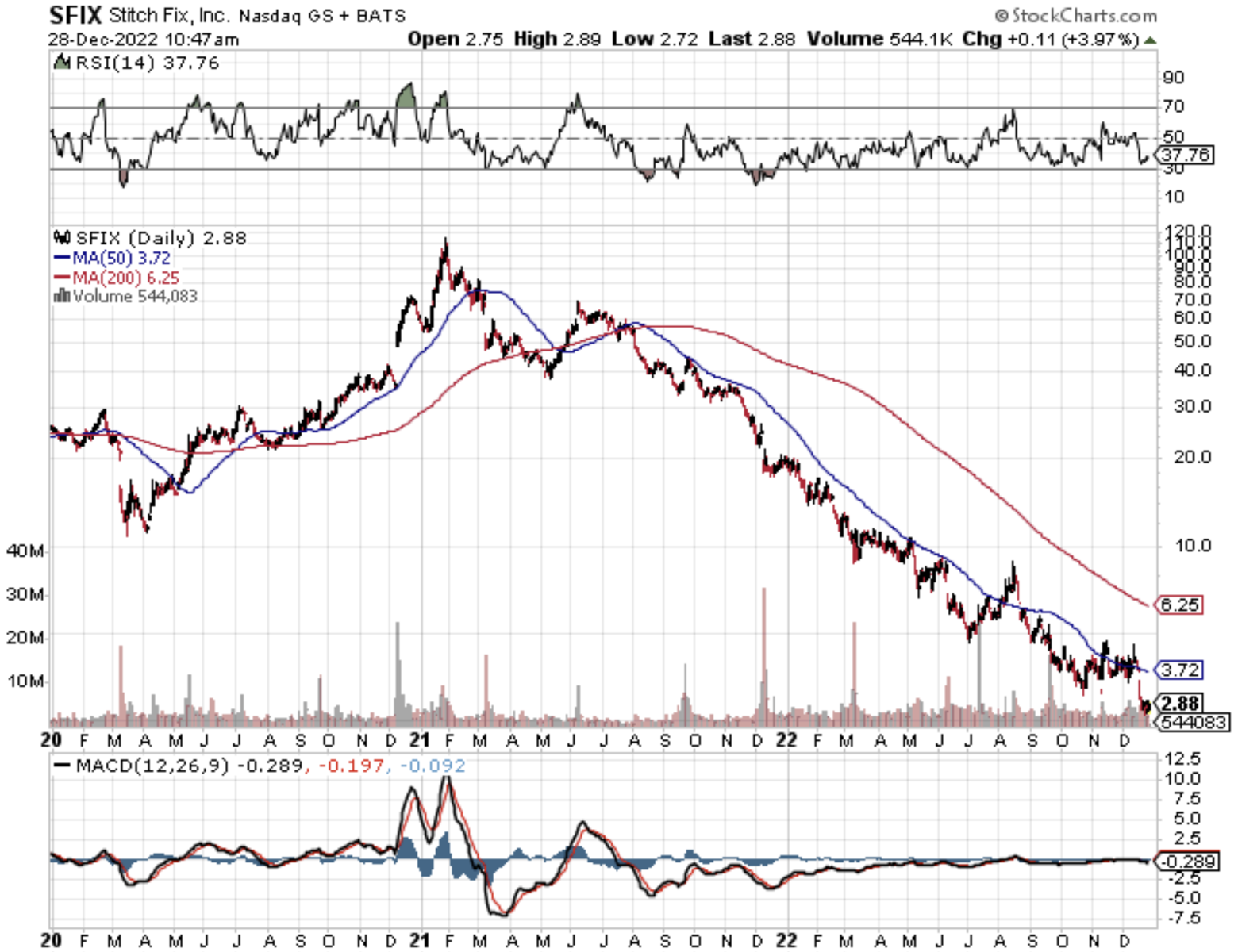
Mad Hedge Technology Letter
July 27, 2022
Fiat Lux
Featured Trade:
(STITCHED UP BY ITS OWN POOR DECISIONS)
(SFIX), (AMZN)

Mad Hedge Technology Letter
December 8, 2021
Fiat Lux
Featured Trade:
(A HEAD-SCRATCHER IN SILICON VALLEY)
(SFIX), (AMZN)

I don’t get Stich Fix (SFIX).
It’s not that they shouldn’t be a company--I’ve seen worse ideas that didn’t get left on the drawing board--but I don’t see how they ever become successful.
They probably should have invested in Bitcoin at the beginning of the year.
That might be an exaggeration, but it brings home the point that their competitive advantage is marginal, and they haven’t done enough to differentiate themselves amongst competition.
For a company that is fighting for relevancy, they have made some boneheaded mistakes.
For one, customers don’t receive a great sales price on the clothes. Unless you keep the entire box (5 items), you won't get a discount. You also won't find any coupons online for Stitch Fix. You pay retail prices, which can sometimes be high, depending on the brand they send.
For many tech companies that preach the freemium model, Stich Fix is asking customers to pay a premium for the clothing off the bat, and I believe that is turning off a lot of potential customers.
SFIX hasn’t done enough to fetch a premium for its services.
I understand SFIX isn’t willing to discount any clothing, unless it’s the entire box, and this is because the unit economics of this business model is quite poor.
Revenue grew 19% year over year to $581 million, yet they forecasted just 9% revenue growth for the next quarter — that’s not what I call a tech growth company.
A tech company with only $2 billion in annual revenue shouldn’t be growing only 9% year over year. In fact, I would say a company this small needs to be accelerating revenue to somewhere around 40% to command respect among the incremental investors.
It’s no shocker that the stock is down around 300% in the past 365 days.
That’s horrible considering the “reopening trade” was supposed to cause a massive demand in people wearing proper clothes again and not just pajama pants.
To miss that opportunity epitomizes the company’s lack of marginal advantage which I was just banging on about.
Another issue I have with the company is that the clothes are not affordable, and I am not talking about a discounted price relative to the retail price.
If you are a bargain bin fanatic, the sight of SFIX’s service will turn you off.
Stitch Fix claims the average price of items is around $55, but that the items can cost anywhere between $20 and $400.
You can set price ranges for each category, but that doesn't mean your stylist will always follow those instructions.
Pigeonholing oneself as a luxury service but hoping to scale broadly and fast like a tech company is counterproductive.
Many Americans simply won’t pay up to $500 for a 5-piece set of clothing no matter who is styling it.
This sounds like a service for a computer programmer in San Francisco with a $200,000 annual salary--which isn’t a bad thing, but it won’t get the masses interested.
This leads me to my next point of the company overselling the personalized stylist aspect of it.
Is the stylist really that much better than me just picking out a few pieces at the store or online, and being able to keep it?
They even have Stitch Fix “Freestyle” category now that is SFIX without the styling fee, where the customer can personally choose their clothes. But then, isn’t that the same as any other online retailer but with higher price?
Again, I don’t get the roadmap here and it’s basically admitting that their styling is not good.
In fact, there is quite robust competition that undercuts SFIX such as Amazon (AMZN) Prime Wardrobe.
Amazon Prime Wardrobe is an exclusive program just for Prime members. This service gives users the chance to have chosen clothing items shipped to their home for them to try on before buying. The difference here is that the user selects the item which, for me at least, makes sense instead of SFIX blindly shipping clothes that aren’t ok’d. I just don’t think a “stylist” can get it right more than half the time. You only pay for what you keep and you have 7 days to make up your mind.
The biggest headscratcher is the $20 SFIX styling fee if you don't keep anything.
Seriously, what is that about?
If you hate their expert stylish decisions, you get blamed for it and pay $20 for nothing! Shouldn’t it be SFIX paying the user $20 for failed style sense?
Any person with a brain understands that paying $20 just to try something on then sending it back sounds like the worst way to convince someone to become a long-term customer.
And this is without even mentioning the pain of resending the clothes!
So, in an era where software companies have made software as a subscription (SaaS) almost a religion, there is no subscription service for SFIX.
This means there is a high number of churn where customers use their service once then never again, most likely after they are charged $20 to try on clothes they don’t like and have to send back the failed styled clothing.
Marginally, this company doesn’t cut it, we will check in with the next iteration of SFIX sometime in the future, but in it its current form, the 300% drawdown in the stock is absolutely logical.
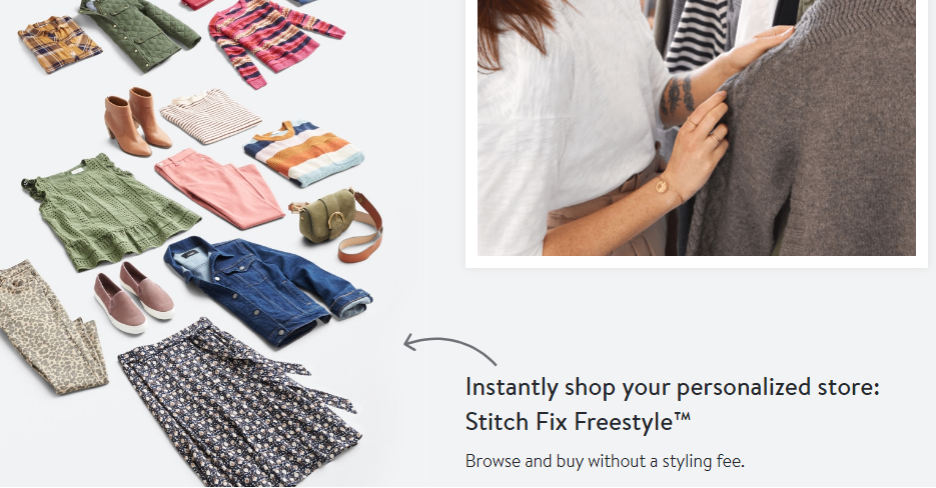
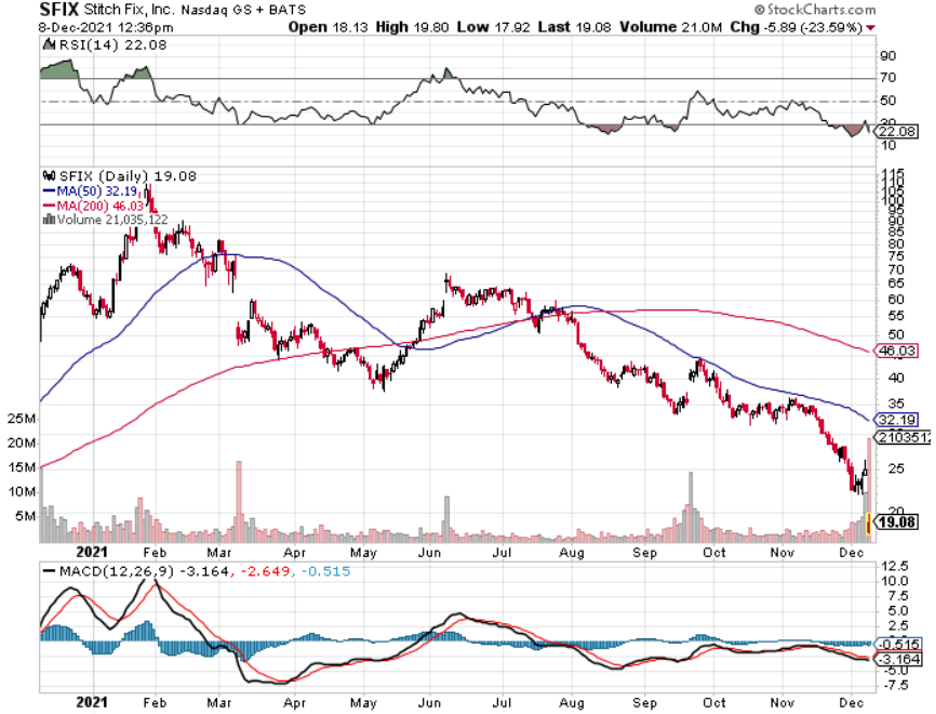
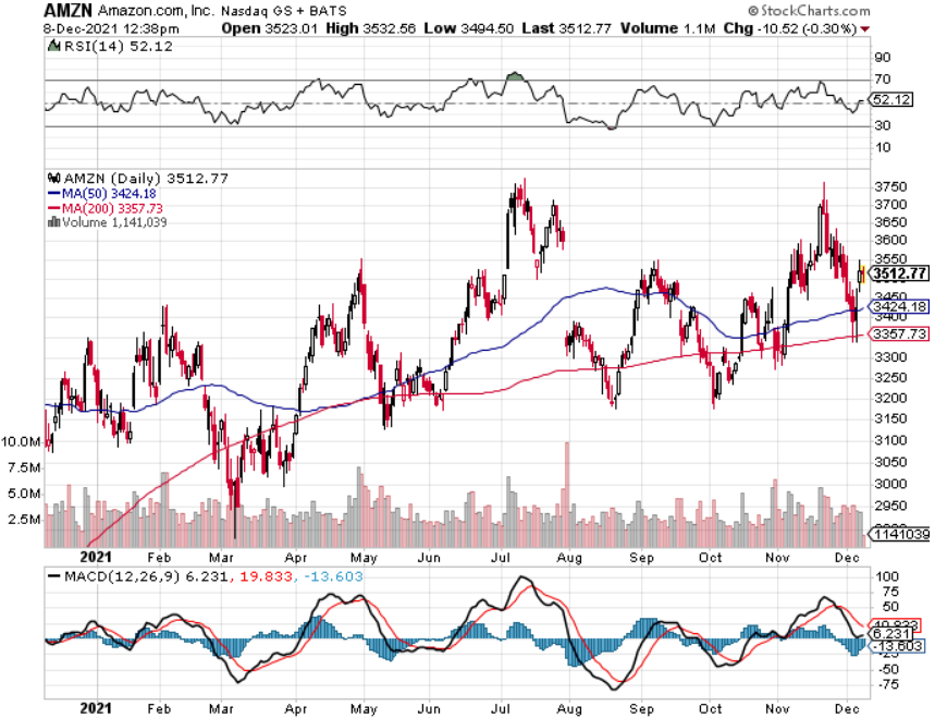
Global Market Comments
October 13, 2021
Fiat Lux
Featured Trade:
(THE BRAVE NEW WORLD OF ONLINE RETAILING),
(SNAP), (GPRO), (APRN), (SFIX)

I was flying on first class flight on Virgin America from New York to San Francisco last year, and all I can say is that you meet the most interesting people in first class.
The woman sitting next to me was dark-haired, rail-thin, elegantly dressed, and utterly gorgeous. She addressed the flight attendant in a heavy Italian accent.
I hadn’t been to the former Roman empire since the summer, so I thought I would give my Italian a workout.
What I learned was amazing and opened up nothing less than a peek into the future of retailing.
I am always on the lookout for the next “big thing” than can generate a great Trade Alert, and suddenly here was a golden opportunity
It turned out that the woman was a senior executive with the fashion house Prada, based in Milan. Why was a fashion executive flying to a city where the hoodie and torn designer jeans were the primary means of dress?
She was flying halfway around the world to develop a relationship with Stitch Fix (SFIX), the hottest new concept in online apparel retail.
The fact that major companies were flying people in from Europe to check out a small startup said a lot right there.
The company’s business model is very simple, if not brave.
Consumers fill out a personal profile that includes every conceivable measurement, preference, and lifestyle. A personal stylist is then assigned to you who mails you a monthly box of items they think you would like.
For this service, you are charged a “stylist” fee of $20, which can then be applied as a credit towards any purchases.
You simply buy the items that appeal and mail the rest back. An artificial intelligence-driven algorithm records your picks and returns and then predicts what you are most likely to buy next time.
After several of these cycles, the algorithm knows what you like better than you do and will even mail you special offerings at a discount.
Along the way, Stitch Fix will introduce you to styles and brands that you never would have thought of. In order words, it does all the thinking for you.
The company has already clocked $1 billion in revenues in 2017 and is on an exponential growth trajectory.
Stitch Fix boasts an operating gross margin of 44%, well in excess of traditional retailers like Macy’s (M), Kohl’s (KSS), The Gap (GPS), and JC Penny (JCP).
Originally targeting Millennials, it quickly learned that its real market was with middle-aged professional women who don’t have time to shop.
It is already marketing 700 brands and is working to establish its own brands where the real margins are.
Some 95% of the firm’s employees are women.
The recent history of tech IPOs has not been great ((SNAP), (GPRO), (APRN), etc.). However, given the current online retail explosion, I have great hopes for (SFIX).
Just to have some fun, I filled out a profile but listed my age as 25. I can’t wait to see what they send me.
Hopefully, I won’t blow up their algorithm.
To place your first order with Stitchfix, please visit their website by clicking here.
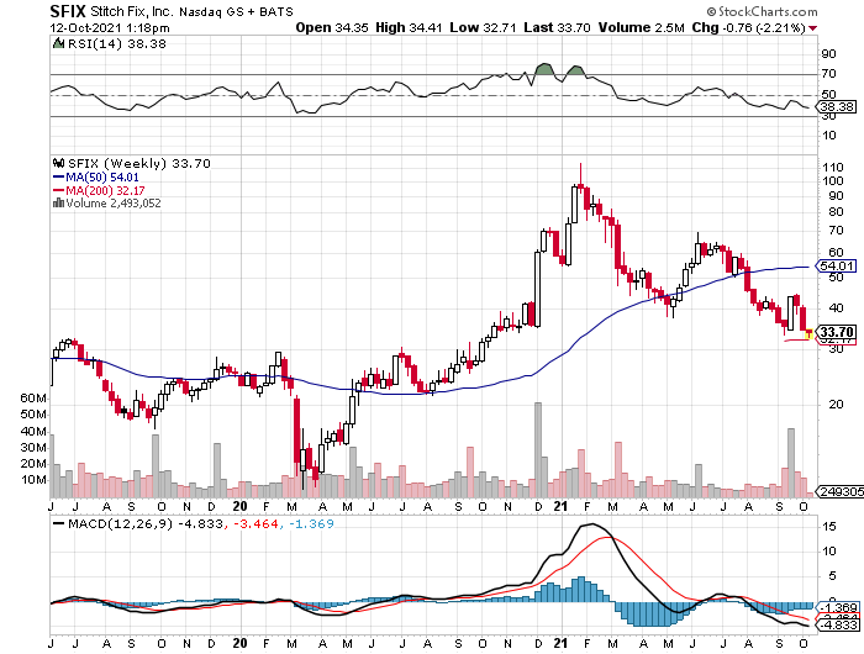
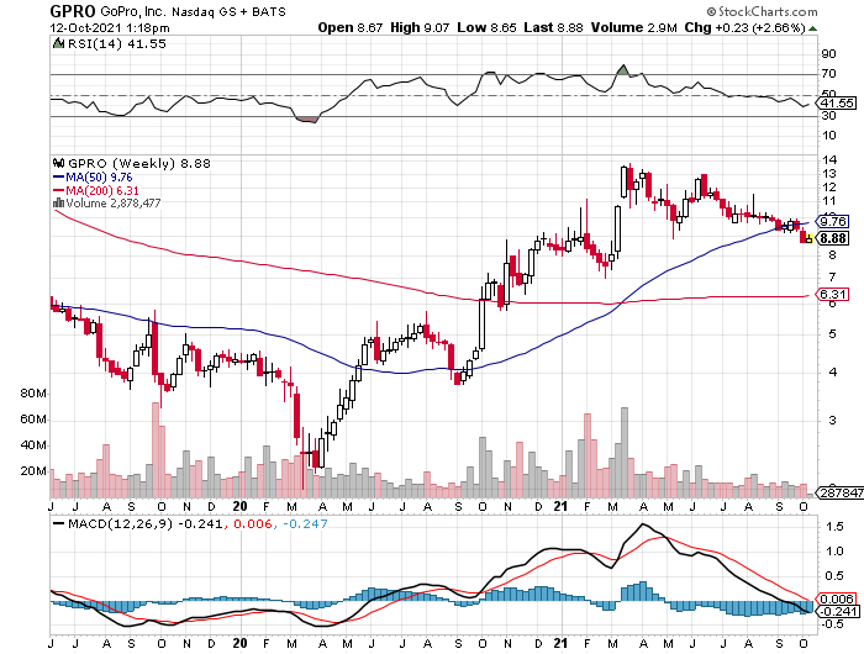
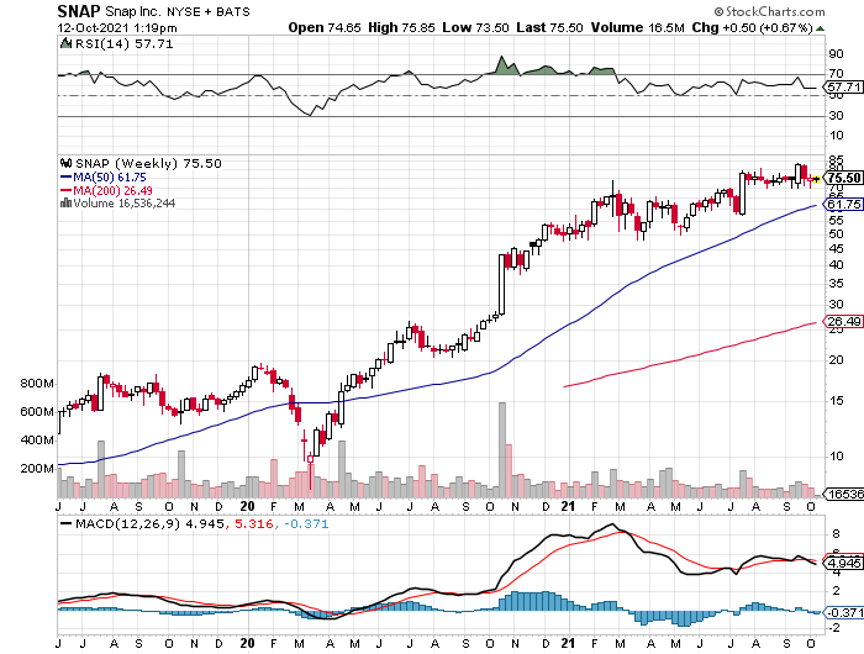
Mad Hedge Technology Letter
January 11, 2021
Fiat Lux
Featured Trade:
(STRIKE WHILE THE IRON IS HOT WITH CLOTHES TECH)
(SFIX)

Stitch Fix and its updated prognosis from management predicts 2021 results to look something like sales growth of 20% to 25% and that’s pretty damn good considering the less-than-ideal backdrop that corporate America is facing.
Even though I am not a big clothes guy personally, this tech apparel company is delivering value to customers by sending individually picked clothing and accessories items for a one-time styling fee. Customers fill out a survey online about their style preferences. A professional stylist at the company picks five items to send to the customer.
Last year, e-commerce could do no wrong and many stocks in the industry performed sensationally even hitting triple-digit percentages.
Employment is having a tough time coming back, the latest data suggest a long road to recovery and the vaccine rollout has been a pitiful exercise in efficient logistics.
This all means that 2021 will be more or less another year of click and collect from the confines of your abode made possible by ever-improving digital portals.
One of the disastrous industries last year, among many, was apparel, especially brick-and-mortar clothing and department stores.
Shelter-at-home lifestyles didn’t necessarily encourage consumers to handpick expensive dresses and suits, but as the economy slowly trends favorably, it can’t really get much worse than 2020, Stitch Fix should be one of the few winners in apparel among many losers.
Cutting to the chase, retail sales for apparel and accessories ended 2020 down nearly 30% year over year and you couldn’t make up what happened last year if you tried.
Restaurants experienced a 20% drop in sales because consumers simply evaporated highlighting the plight of many foundational industries.
Remote jobs and a wave of fresh self-employment are transforming consumer behavior in this shopping category, and I would bet that apparel consumption will never come back in the form it once was pre-pandemic which is why the use case of Stitch Fix's data-driven shopping experience could never be stronger.
That’s not to say that Stitch Fix had a record year in 2020.
They certainly didn’t.
Stitch Fix still had a bucket of problems in 2020 with a 9% year-over-year revenue decline during its fiscal 2020 third quarter (the three months ended May 2, 2020).
But even with such poor performance, it still represented a massive outperformance relative to other competition and finding those silver linings can be the most important for forward guidance.
This sets up Stich Fix for a massive rebound as consumers got used to the new lifestyle and sales returned with a reported 10% year-over-year growth in the first quarter of fiscal 2021 (ended Oct. 31, 2020).
And throughout the pandemic, Stitch Fix has continued to grow its client base around 9% to 10%.
The forecasted sales growth of 20% to 25% represents a substantial acceleration suggesting that 2020 was a “one-off” even likely to never reoccur.
Their total active clients stood at 3.76 million as of Oct. 2020, up from 3.42 million a year ago, and the company will improve on this growth while retaining past clients.
E-commerce is here to stay as consumers become conditioned to purchasing items in this fashion and a game-changing reason why Stitch Fix's own outlook is so rosy.
Looking forward the company's growth strategy revolves around acquiring new customers and entering new markets like many tech stalwarts before them.
Longer-term, Stitch Fix's data and machine learning capabilities, which helped the company get to where it is today, could be a real competitive advantage if it decides to make a foray into new clothing categories and beyond.
One issue to be aware of is that Stitch Fix generally caters to a pretty specific clientele and its services are only targeting specific price points.
The lower end of that range is still higher than what thrifty consumers may choose to spend and might even be considered a luxury for many.
The lower income tier of America simply won’t be able to make this work in its current form, and margins would drop if Stitch Fix ever accommodated this consumer group.
Despite the convenience Stitch Fix offers, many consumers like the idea of hand-picking clothing and trying it on in stores, where they have the option to instantly swap in and out a size for a better fit.
Stitch Fix does its best to estimate sizing based on user inputs and algorithms, but people are sized in different odd shapes and sizing can still miss the mark.
I don’t think Stitch Fix’s popularity will start to wane if working from home becomes the status quo in 2021 and 2022 and the need for higher-end wardrobes begins to decline because the company will simply need to adapt and focus more on pajama or comfortable clothing if the environment forces them to do so.
Believe me, I have noticed the uptick in the preference for outdoor sweatpants as the crisis went from bad to worse.
People simply don’t have time to dress up in these conditions, but consumers still need to wear clothes every day unless I am totally missing something.
Stitch Fix, in its current iteration, won’t replace department stores because it is too big of a swath from a low-income group that needs to access these services, but as scale terms into a positive input for the company, they can start looking at lower-income tiers for a revenue grab.
As Stitch Fix focuses on higher-end business, the runway is still mind-numbingly long and the optionality they possess is the envy of others.
They have too many good problems to have.
Stitch Fix looks like the cutting-edge apparel company that brings an innovated technology-based model to a stale industry.
It’s working and the first-mover advantage really means something here.
I would wait for a pullback to the low $50s range from the current $56.50 as shares are a little over their own skis.
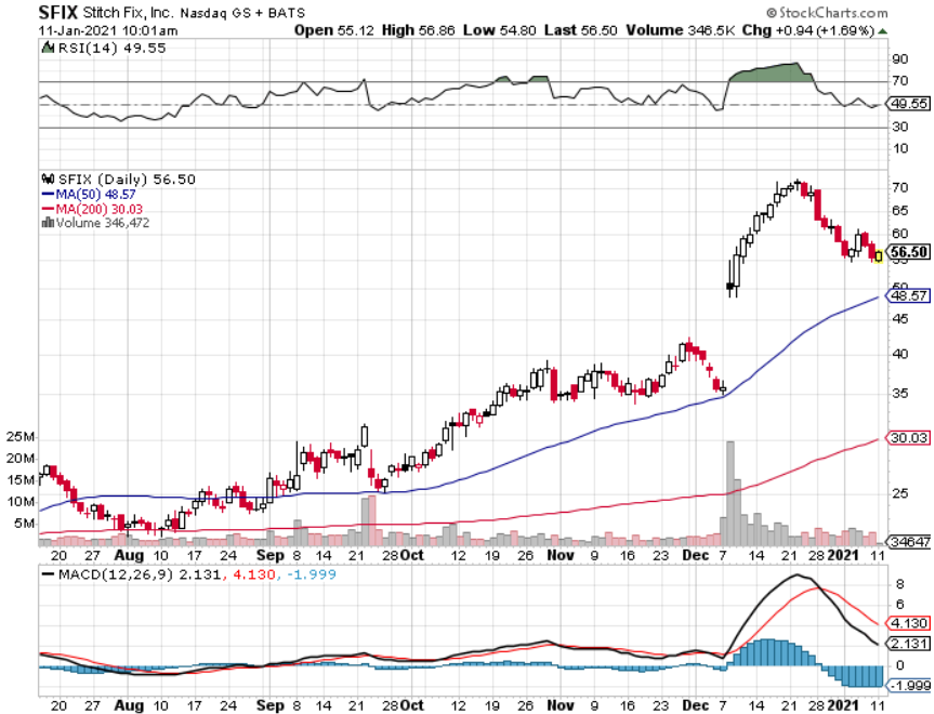
Global Market Comments
December 8, 2020
Fiat Lux
FEATURED TRADE:
(THE BRAVE NEW WORLD OF ONLINE RETAILING),
(SNAP), (GPRO), (APRN), (SFIX)

Legal Disclaimer
There is a very high degree of risk involved in trading. Past results are not indicative of future returns. MadHedgeFundTrader.com and all individuals affiliated with this site assume no responsibilities for your trading and investment results. The indicators, strategies, columns, articles and all other features are for educational purposes only and should not be construed as investment advice. Information for futures trading observations are obtained from sources believed to be reliable, but we do not warrant its completeness or accuracy, or warrant any results from the use of the information. Your use of the trading observations is entirely at your own risk and it is your sole responsibility to evaluate the accuracy, completeness and usefulness of the information. You must assess the risk of any trade with your broker and make your own independent decisions regarding any securities mentioned herein. Affiliates of MadHedgeFundTrader.com may have a position or effect transactions in the securities described herein (or options thereon) and/or otherwise employ trading strategies that may be consistent or inconsistent with the provided strategies.
This site uses cookies. By continuing to browse the site, you are agreeing to our use of cookies.
OKLearn moreWe may request cookies to be set on your device. We use cookies to let us know when you visit our websites, how you interact with us, to enrich your user experience, and to customize your relationship with our website.
Click on the different category headings to find out more. You can also change some of your preferences. Note that blocking some types of cookies may impact your experience on our websites and the services we are able to offer.
These cookies are strictly necessary to provide you with services available through our website and to use some of its features.
Because these cookies are strictly necessary to deliver the website, refuseing them will have impact how our site functions. You always can block or delete cookies by changing your browser settings and force blocking all cookies on this website. But this will always prompt you to accept/refuse cookies when revisiting our site.
We fully respect if you want to refuse cookies but to avoid asking you again and again kindly allow us to store a cookie for that. You are free to opt out any time or opt in for other cookies to get a better experience. If you refuse cookies we will remove all set cookies in our domain.
We provide you with a list of stored cookies on your computer in our domain so you can check what we stored. Due to security reasons we are not able to show or modify cookies from other domains. You can check these in your browser security settings.
These cookies collect information that is used either in aggregate form to help us understand how our website is being used or how effective our marketing campaigns are, or to help us customize our website and application for you in order to enhance your experience.
If you do not want that we track your visist to our site you can disable tracking in your browser here:
We also use different external services like Google Webfonts, Google Maps, and external Video providers. Since these providers may collect personal data like your IP address we allow you to block them here. Please be aware that this might heavily reduce the functionality and appearance of our site. Changes will take effect once you reload the page.
Google Webfont Settings:
Google Map Settings:
Vimeo and Youtube video embeds:
